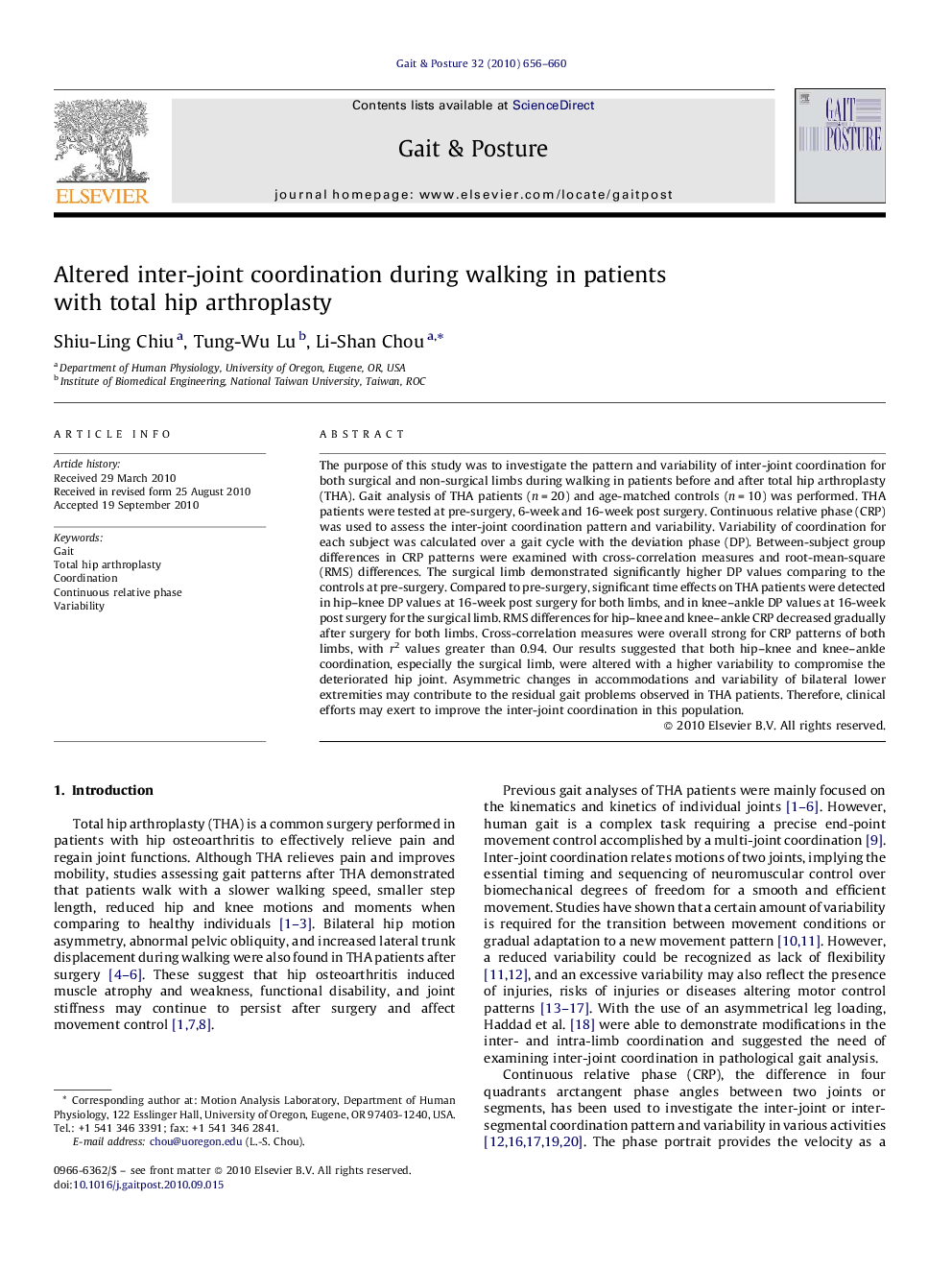| Article ID | Journal | Published Year | Pages | File Type |
|---|---|---|---|---|
| 4057031 | Gait & Posture | 2010 | 5 Pages |
The purpose of this study was to investigate the pattern and variability of inter-joint coordination for both surgical and non-surgical limbs during walking in patients before and after total hip arthroplasty (THA). Gait analysis of THA patients (n = 20) and age-matched controls (n = 10) was performed. THA patients were tested at pre-surgery, 6-week and 16-week post surgery. Continuous relative phase (CRP) was used to assess the inter-joint coordination pattern and variability. Variability of coordination for each subject was calculated over a gait cycle with the deviation phase (DP). Between-subject group differences in CRP patterns were examined with cross-correlation measures and root-mean-square (RMS) differences. The surgical limb demonstrated significantly higher DP values comparing to the controls at pre-surgery. Compared to pre-surgery, significant time effects on THA patients were detected in hip–knee DP values at 16-week post surgery for both limbs, and in knee–ankle DP values at 16-week post surgery for the surgical limb. RMS differences for hip–knee and knee–ankle CRP decreased gradually after surgery for both limbs. Cross-correlation measures were overall strong for CRP patterns of both limbs, with r2 values greater than 0.94. Our results suggested that both hip–knee and knee–ankle coordination, especially the surgical limb, were altered with a higher variability to compromise the deteriorated hip joint. Asymmetric changes in accommodations and variability of bilateral lower extremities may contribute to the residual gait problems observed in THA patients. Therefore, clinical efforts may exert to improve the inter-joint coordination in this population.
